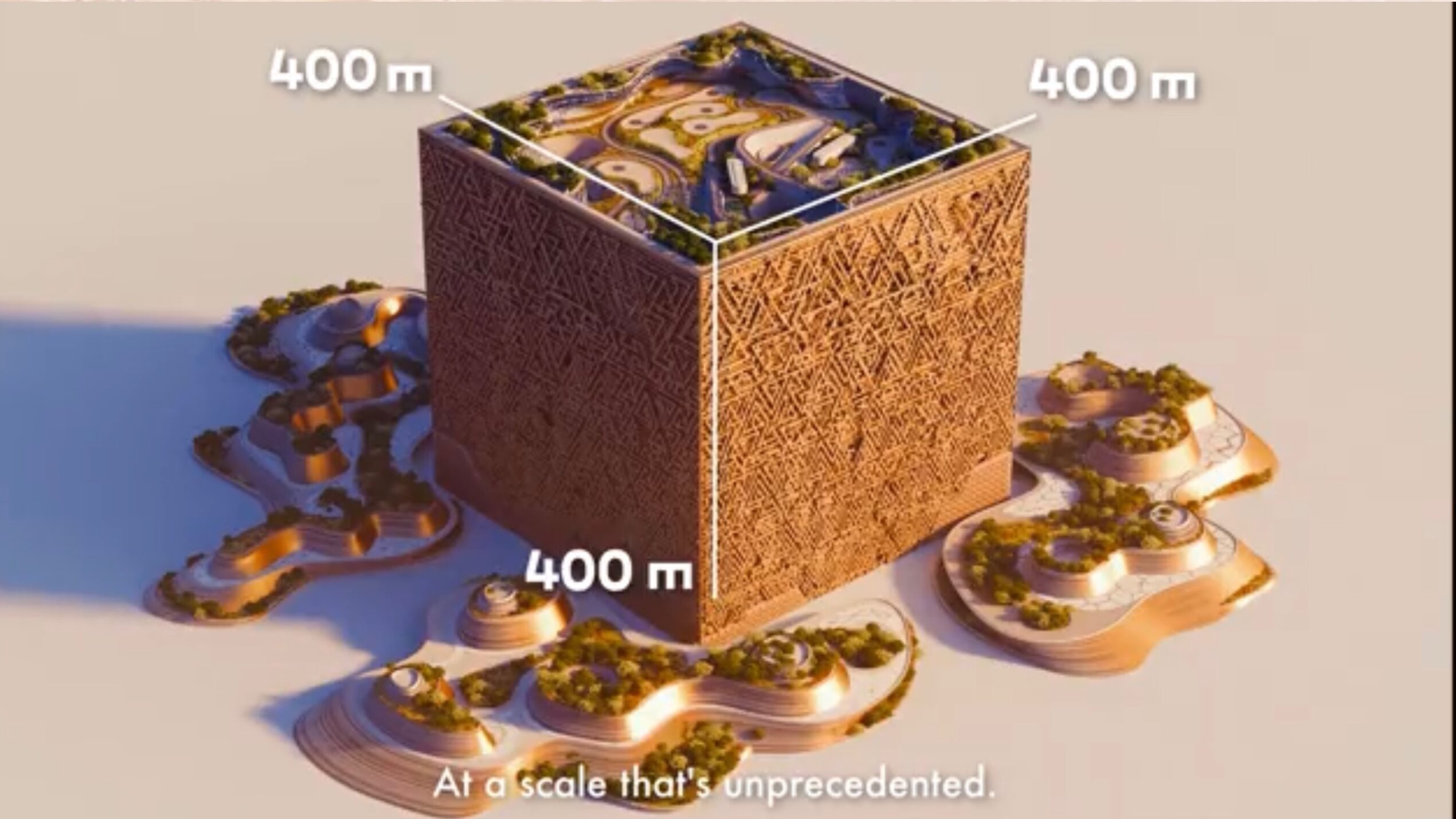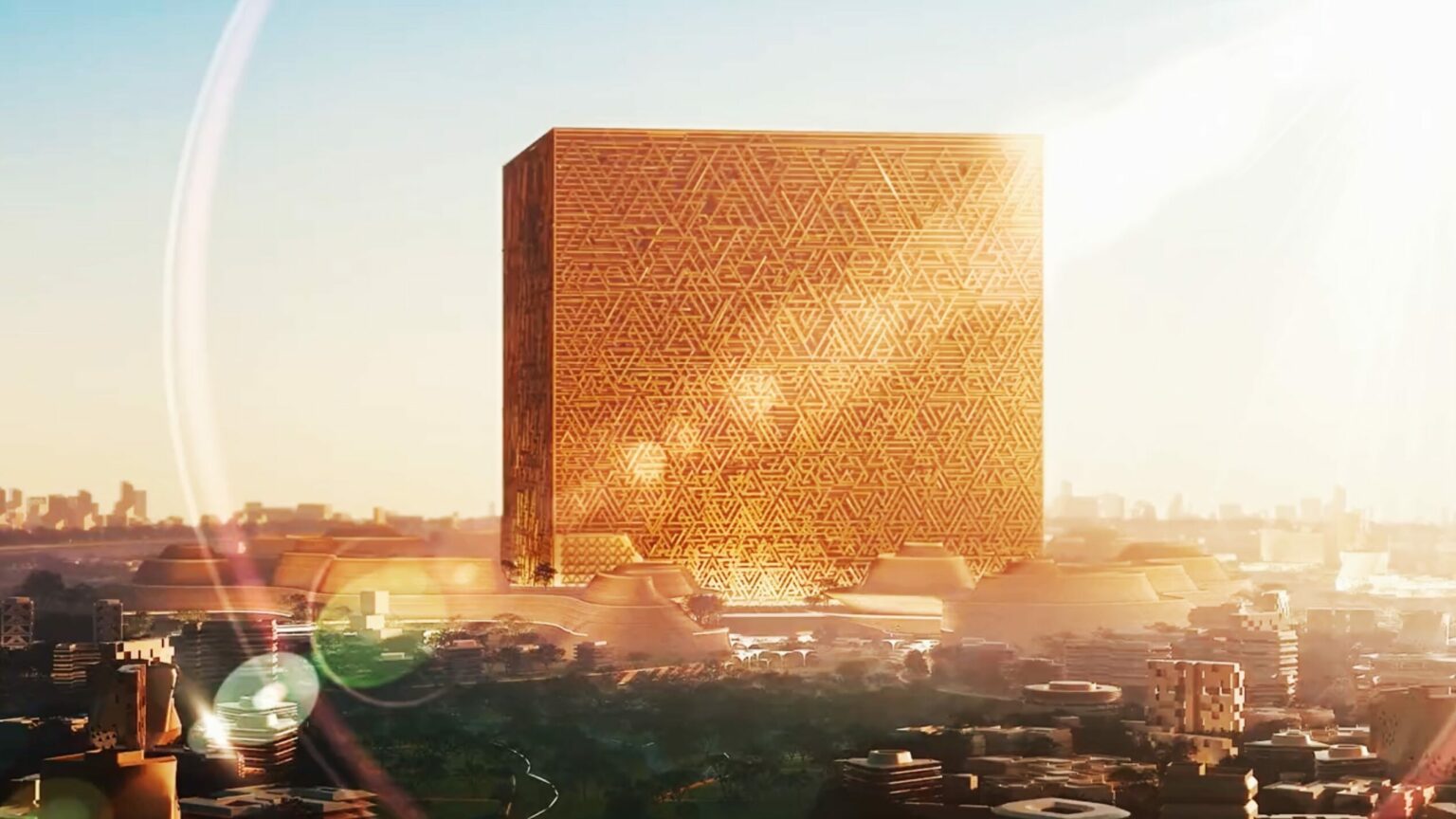Saudi Arabia plans to build a ‘metaverse cube’ the size of 20 Empire State buildings in its capital as part of an ongoing bid to become the world’s #1 destination for eye-catching architecture.
A 400-meter-wide cube – the Mukaab – will be built in the nation’s capital and if its marketers are to be believed it will feature holograms, AI and robots. It will also place part of the project’s internal structure inside a giant projection dome for immersive virtual experiences.
Dragons and Mars
Saudi Arabia is currently pursuing some of the most ambitious, and some might argue foolhardy, architecture projects in the world.
The latest project to be added to the works docket is the Mukaab, a giant cube that will feature at the heart of a 12-mile-development dubbed New Murabba. The development will include retail, residential, entertainment, hospitality, and dining spaces

A spiral skyscraper built in the interior of the Mukaab will be surrounded on all sides (and above) by domed video screens allowing it to be transported to virtual landscapes and fantasy worlds.
Marketing videos for the project show the internal skyscraper circled by dragons, on the surface of Mars, and underwater with giant blue whales. There is even an Avatar-like landscape that features floating rock islands that seem to resemble the surface of Pandora – but for copyright reasons, it is not.
All things to all people
The Mukaab and surrounding area have a lot to live up to if it is to fulfill its promise.
According to Saudi Arabia’s Public Investment Fund (PIF) the New Murabba district will be “deisgned around people,” and “provide new homes for hundreds of thousands of residents, closer to nature, work and play.”
Furthermore New Murabba, “will be built around the concept of sustainability, and feature an iconic museum, immersive theater, and more than 80 state-of-the-art entertainment and culture venues.”
As for the cube, the Mukaab “will be the world’s first immersive, experiential destination. Large enough to hold 20 Empire State Buildings, the global icon will feature innovative technologies to transport you to new worlds.”
Drawing a line, but what’s in the box?
For some time Saudi Arabia has been attempting to rehabilitate its brutalist image with slick marketing videos and near-limitless stacks of money. Not so long ago Saudia Arabia’s Royal Family drew negative headlines for human rights abuses and the murder and dismembering of critical journalists.
In 2021 the country announced The Line, a $725 billion self-contained 110-mile-long city built for 9 million residents. The futuristic design was not met with universal acclaim, but it has gone some way to change the country’s image.

Having already attempted to draw a line under its bad publicity, Saudi Arabia now seeks to head-off any further bad press by placing it in a box.
Andreas Krieg, a research fellow at the King’s College London Institute of Middle Eastern Studies outlines the thinking of the regime.
“Back in the day, you would have negative discussions about Saudi Arabia affiliated to human rights abuses,” he told CNN. “But now they’re trying to push new narratives of being a country of development and one that can build futuristic cities.”
Saudi Arabia still has some way to go in that regard, especially if they are to catch the likes of its fellow futurist neighbors including the United Arab Emirates and Qatar.









 and then
and then